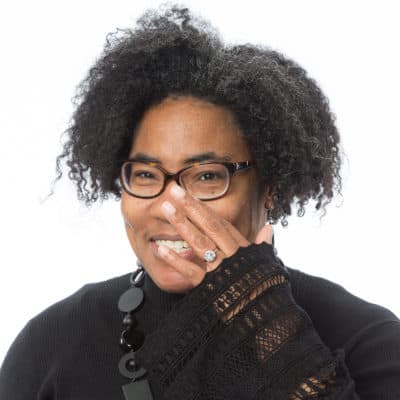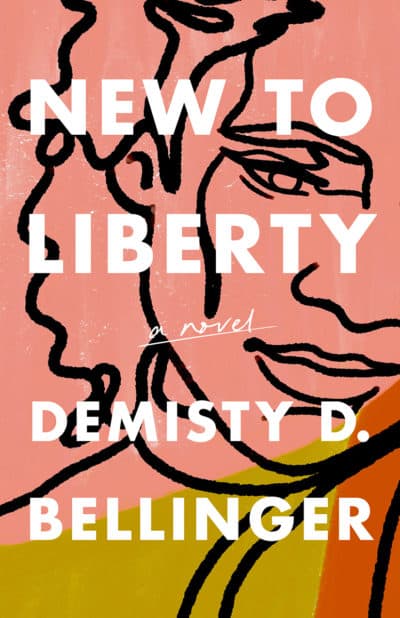Advertisement
Author DeMisty Bellinger explores 'what ifs' in debut novel 'New To Liberty'
Every story or poem that DeMisty Bellinger writes starts with the question “what if?” The creation of the protagonists in her debut novel “New to Liberty” each began with a unique question: What if a young woman is attracted to an older man during the sexual revolution of the ‘60s? What if a Black family moves from a diverse city to a rural town during the Jim Crow era? What if a woman falls in love during the unrelenting starvation of the Dust Bowl? The three-part novel that unfolds is what Bellinger reveals as, “the hereditary of want and lack.”

“New to Liberty” is assuredly the story of three autonomous women trying to embrace their inner selves under the circumstances they’ve been given. Each passage in the novel offers glimpses of characters who will be explored more deeply in later sections. In 1966, 19-year-old mixed-race Sissily doesn’t want to visit the embittered mother of the much older man she’s seeing. She and Margrit view each other like the invasive Kansas jackrabbits encroaching on their way of life, but they’re more alike in class than they’re willing to admit. Twenty years earlier, Nella is hyperaware of how her Black family sticks out in their new majority-white town, but she decides to pursue the romantic attention from a white mechanic named Lucky. Their high-stakes interracial romance leaves revelations for the future — and the past. In 1933, Greta takes care of her ailing mother and brother while single-handedly running their family farm. Not to mention dealing with the guilt that it’s her fault her brother suffered a debilitating injury. She finds a brief respite of happiness with Margrit, but even that blossom of hope is made all the bittersweet by the reader knowing where their relationship leads.
In her early writing, Bellinger mimicked the style and thinking of white male authors she was reading at the time. “My undergrad women’s studies class made me realize that I don’t have to do this — I can write from my own point of view,” Bellinger says. She fell in love with great African American writers like Alice Walker and Toni Morrison. She also connected with working-class literature by Dorothy Allison, Stephen Crane and Edith Wharton. “I identify with them both equally,” she says. “Working class literature often moves beyond race, but Black literature is so often grounded in the working-class issues of our country.” “New to Liberty” and Bellinger’s poetry collections explore the intersection of these themes.
Although Bellinger had been writing all her life, she didn’t start publishing until her 30s. She was a first-generation college student at the school her father had wanted to go to, University of Wisconsin-Platteville. “What I loved about college was, to me, it was this intellectual realm of true learning,” Bellinger says. “Professors leave their doors open and invite us inside to talk about literature and join great writing clubs.” But the overwhelmingly white population of this rural university was a change of pace from her diverse high school in Milwaukee, Wisconsin. During her college career (including undergraduate and graduate school), she only had one Black professor and a grand total of three professors of color. “My friends dropped out because they didn’t see themselves represented in that community,” Bellinger says. “I vowed to turn my grades up to get into grad school so I could someday support those students.”

Nothing about Bellinger’s career path was lucky — she earned her three higher education degrees and secured her various publications through continual hard work. She received a full-ride scholarship to Southampton College for her MFA, but it was difficult to afford the cost of living while she attended. When she couldn’t find a job upon graduating, she pursued her Ph.D. at the University of Nebraska, and even then, couldn’t secure funding for her first two years. “I don’t regret it,” she says. “I appreciate the education and a lot of people encouraged me. Eventually, the publications started coming and I had to say ‘yes’ to lots of things.” Now, as a professor at Fitchburg State University, she tries to model the teaching she appreciated as a student. As someone who did not see a single collection of poetry until grad school, she now exposes her students to full books of poetry or literary anthologies in her creative writing classes so they can see what these kinds of works look like.
Readers often tell Bellinger that her prose is poetic, and this reader agrees with that assessment. “The thing I love about poetry is that it’s like an essay,” Bellinger says. “You can ask a question of something and try to figure out the answer to that question by writing the poem,” she says. “…All poetry should have musicality to it. A poem is meant to be read aloud so the cadence should be natural, even with line breaks.” No matter the format, she tries to bring rhythm and poetry into everything she writes. To Bellinger, people talk in certain melodies and musicality and she tries to capture that voice on the page.
Bellinger conceived of many different iterations of “New to Liberty” with other perspectives and time periods before she landed on these final three narrators in reverse-chronological order. Compelled by “The Worst Hard Time” by Timothy Egan, Bellinger dove into research about the Dust Bowl and emerged with a desire to examine the working class people who endured it. Sissily’s story first came to Bellinger as a short story inspired by the image of jackrabbit roundups. After nearly a dozen drafts, she wrote the draft that would become the published novel in just three days. “I don’t remember writing it,” Bellinger says. “When I read that draft, it was creepy and upsetting to me, but I finally thought it worked — as a writer and a reader.”
The harshness of the Kansas landscape is still apparent to Bellinger. “When I was living in Nebraska, my husband and I did a lot of jumping in the car to see where the road takes us,” she says. Many times, the road took them to Kansas. “You can see forever in great plains. It can be freeing, but it can also feel scary and exposed for whatever element is going to come at you.” Each of the three protagonists of “New to Liberty” is forced to face their own personal darkness against the vast Kansas horizon, but they combat it with whatever source of light in their life they can cling to. By reversing the timeline, Bellinger is able to portray a sense of hope for the future of the protagonists. “All that land and space and beauty and terror just lends itself to self and story.”
